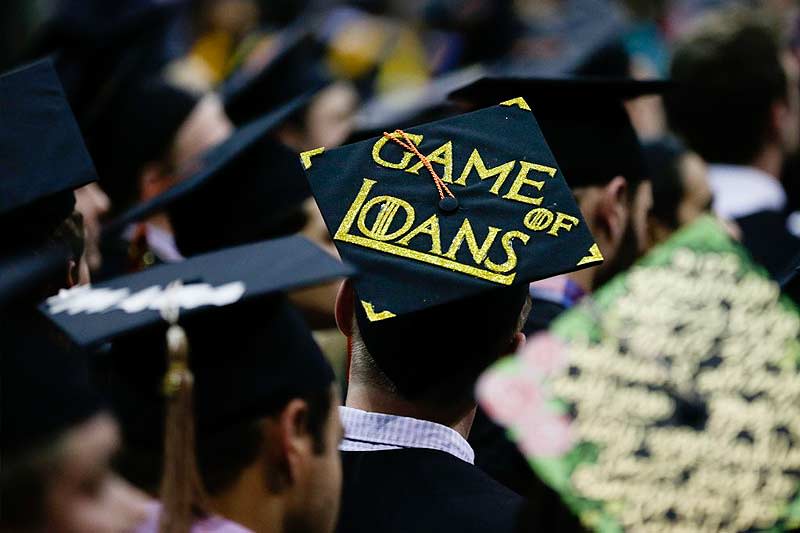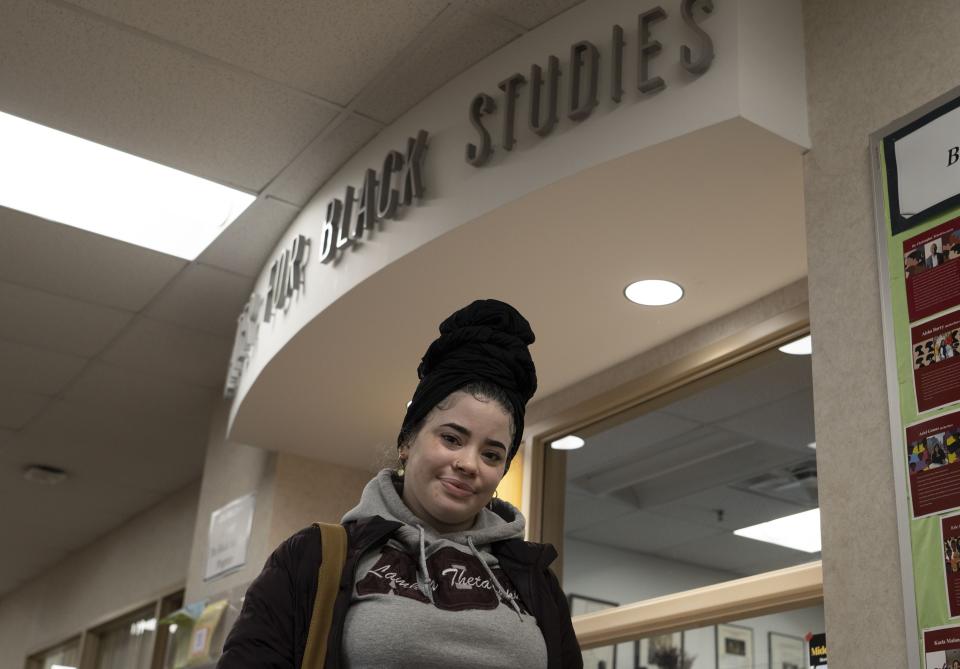Biden forgives up to $20,000 in student loan debt, provides relief to thousands of Ohioans
Sitting under a shady tree on the Oval Wednesday afternoon, Ohio State University senior Taylor Howe didn't know her student loan debt was about to be completely forgiven.
"Oh, my God! I'm about to be debt free!" she said enthusiastically.
After a nearly two-and-a-half year moratorium on student loan payments and months of weighing options, President Joe Biden announced on Wednesday that he will forgive at least $10,000 in student loan debt.
In a tweet followed by a news conference, Biden said he will forgive up to $10,000 in student loans for people with annual incomes of $125,000 or less. The debt cancellation would be limited to borrowers with incomes of $125,000 or less for singles and $250,000 or less for married couples, and would apply only to people with federal loans, not private ones.
For people who received Pell grants in college, Biden will forgive an additional $10,000 in debt.
In keeping with my campaign promise, my Administration is announcing a plan to give working and middle class families breathing room as they prepare to resume federal student loan payments in January 2023.
I'll have more details this afternoon. pic.twitter.com/kuZNqoMe4I— President Biden (@POTUS) August 24, 2022
The student loan repayment moratorium will also be extended through the end of the year. The moratorium was initially planned to end on Aug. 31. Biden said this is the final time the moratorium will be extended.
The Department of Education is also proposing a new income-driven repayment plan that would protect low-income borrowers from making any payments and caps monthly payments for undergraduate loans at 5% of a borrower’s discretionary income. That change would cut monthly payments in half for undergraduate loans under most existing plans.
The president also announced a plan to fix the Public Service Loan Forgiveness program, which has been criticized by many. Biden proposed a rule that borrowers who have worked at nonprofit organizations, in the military, or in federal, state, tribal, or local government would now receive credit toward loan forgiveness.
Following the news that Biden was going to forgive some student loan debt, Nelnet – a major student loan servicing company – crashed and was offline for part of the day.
Howe, a senior zoology major from Lima, is one of the thousands of Ohio college students and graduates who will benefit from Biden's action. She has about $15,000 in student debt.
Both college graduates and current students are eligible for the debt forgiveness. If they are dependents, then they will be assessed based on their parents’ income.
While Howe will graduate from her undergrad debt-free, she's planning to attend graduate school to become a veterinarian. That will rack up at least $100,000 in more loans. Still, Howe said, Wednesday's announcement is huge.
"It's liberating, honestly," she said. "I've always been super financially independent and I've never had parents to lean on for that support. I jumped into adulthood right off the bat."
Extra Credit: Sign up for The Dispatch's education newsletter for weekly news and insights

There are 45 million federal student loan borrowers in the U.S. who owe a record-breaking $1.7 trillion. Student debt is now the second-highest consumer debt category, rivaled only by mortgages and outweighs both credit cards and auto loans.
Since 1980, the total cost of both four-year public and private colleges has nearly tripled, even after accounting for inflation, according to a 2021 report from College Board.
Federal support hasn't kept up with those rising coats. Pell Grants once covered almost 80% of the cost of a four-year public college degree for students from working families, according to the Center on Budget and Policy Priorities. Now, they only cover a third.
That gap has led more students, especially those from middle- and low-income households, to take out student loans.
According to data from the U.S. Department of Education, there are 1,776,400 federal student loan borrowers in Ohio who together owe $62.6 billion.
Ohio ranks near the top in the U.S. when it comes to residents who have an outstanding student loan, according to small business website AdvisorSmith’s 2021 report “States with Highest Student Loans Debt.”
Ohio ranks as second overall nationally. Only the District of Columbia had a higher percentage of residents, at 16% with student loans compared with Ohio's 15%. According to the report, the average student loan balance in Ohio is $34,923, landing the 26th spot among U.S. states and the District of Columbia.
In 2021, 46% of Ohio State bachelor’s degree recipients graduated with debt, and those borrowers graduated with debt of $26,772 on average. This is the fourth year in a row that these numbers have been declining. For the 2017 graduating class, 53% had debt at the time of graduation, for an average of $28,158.
Across campus near Mirror Lake, Anthony Bruno said he heard about the potential announcement Tuesday.
Bruno, a senior finance major from Bradford, Pennsylvania, has about $40,000 in student loans right now. He said that even forgiving just a quarter of his debt would be a benefit to him after graduation.
"It would free me up to buy a nicer car or get a better apartment," he said. "Every bit helps."
Chelsey Sarante agreed.
The recent Denison University graduate and native of the Bronx, New York, said student loan relief has given her one less thing to worry about. Sarante, who received Pell Grants and currently has about $25,000 in debt, just started working at NCR Corporation in Atlanta.
"This is my first big-girl job," she said. "I'm figuring out my finances and I want to take care of my family. It's great to know that I can put that money toward something else."

shendrix@dispatch.com
@sheridan120
Sheridan Hendrix is a higher education reporter for The Columbus Dispatch. Sign up for her Mobile Newsroom newsletter here and Extra Credit, her education newsletter, here.
This article originally appeared on The Columbus Dispatch: Who is the typical student loan borrower in Ohio?

